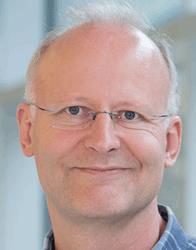At Novartis, It's The Quality In Continuous Manufacturing

By Louis Garguilo, Chief Editor, Outsourced Pharma

The head of continuous manufacturing for Novartis has a bit of a different view from the director of the Novartis-MIT Center for Continuous Manufacturing, when it comes to the top benefit of a continuous platform. In our closing article on this disruptive innovation and technology (see parts 1 and 2), we bring Outsourced Pharma readers additional deliberations, and important leadership considerations for the entire industry.
Quality At First, Quality At Last
“It’s not particularly wrong in my mind,” says Novartis’ Markus Krumme regarding Professor Bernhardt Trout’s notion that the top attribute of continuous manufacturing is how the platform facilitates other new technologies and approaches, including the development of new molecular structures for new drugs. “But I think there’s a bit more to add to the story,” he says.
Krumme was hired by Novartis to build on the technology that came out of the MIT-Novartis center, and implement a new platform in what is now the Novartis Continuous Manufacturing Facility in Basel.
 “Let’s start from the perspective of the ultimate consumer – patients,” Krumme says. “What continuous manufacturing does in the first place is allow for a more effective, until-now ‘unserved’ management of process and product quality.”
“Let’s start from the perspective of the ultimate consumer – patients,” Krumme says. “What continuous manufacturing does in the first place is allow for a more effective, until-now ‘unserved’ management of process and product quality.”
“For the first time in history,” Krumme continues, “the industry can operate such that there's a 100% quality verification.”
This “verification” contrasts with the statistical approach to batch production. “The current approach is fine for that technology. However,” says Krumme, “with the conversion to continuous processes, we can further enhance quality controls to a level unreachable in the batch world. That's what I think is first as an implementation goal.”
Krumme draws the analogy of switching from landline phones to wireless devices. “There's still communication, but now we open new avenues.”
In the long run, he says he does agree with Professor Trout [of MIT] that by using continuous, we can attain new processes and synthesis not viable in the batch world. For example, he says, because of limitations with batch, even research chemists shy away from exploring some routes, knowing that downstream it’ll be impossible to produce certain molecular entities.
“Now,” explains Krumme, “we can pursue advanced and different chemical routes and structures for new medicines. So we are not only talking about different manufacturing processes, but about structures that would not be discovered without these new technologies.” He adds: “I see these new fields emerging in the next five years as continuous becomes widely adopted.”
Quality Concerns Flowing Away?
I have to challenge Krumme on the quality superlatives he applies to continuous. Many have voiced major concerns there will be less ability to control quality, or at the least a higher difficulty in precise monitoring.
“I understand,” replies Krumme evenly. “At Novartis we’ve been investing massive amounts of brain power to develop these new approaches to manage process quality. I agree when professionals say this requires different thinking. I'm heavily involved in discussions to educate others about how a continuous process needs to be controlled and regulated, in order to bring full fruition to and demonstrate all the benefits.”
He adds: “Solutions are radically different from those for a batch process, but what you can ultimately gain is the ability to describe the quality of every tablet that leaves your facility. This takes it to the next level.”
Regarding regulatory ramifications, Krumme says this: “The breakthrough of any new technology – or in this case a full-blown manufacturing philosophy – in a highly regulated arena like pharmaceuticals, is only attainable with open-minded individuals on the innovation and adoption side, and also on the regulatory side.
“Moreover,” he says, “as a society, we need to create an environment where innovation is not only possible, but has an incentive to take place. At the end of the day, we are all trying our best to advance societal benefit through innovation, and this must include from the regulatory aspect as well.”
Has he started to experience more regulatory understanding? “In fact, we are seeing good support from the regulatory bodies. The importance of this piece of the puzzle cannot be overstated.”
Another piece of that puzzle is a market trend that will benefit from an industrywide effort on continuous: the transition to smaller-scale volumes of increasingly complicated drugs to treat orphan and other smaller disease populations.
“Today companies of all sizes and shapes – and including contract development and manufacturing organizations – need a new platform to enable growth and innovative solutions within this new paradigm,” says Krumme. “We need all companies working together with the regulatory authorities. And from an outsourced model as well, we need to expand a network of people and companies to join this journey. If Novartis happens to be more advanced at this time, then we will play that leadership role. That is clearly where our motivation is.”
Equipped For Widespread Success
Motivation, though, can get muddled when momentum is muted. I ask Krumme if there’s any sense of frustration at the current pace of acceptance and development of continuous manufacturing.
“Having spent all my career in pharmaceutical development, I would say no,” he replies. “Actually, we are moving fairly quickly. Looking from the outside, maybe from a consumer goods development perspective, you might ask why the transition is taking so long. From our perspective, I would say the majority of people involved in continuous manufacturing think we are moving at a good pace.”
Krumme says if you consider the pace of development for compounds and other products related to the medical fields, “from start to finish on average it’s about a ten-year cycle. Only with few exceptions is the pharmaceutical industry able to cut a significant portion out of that. The ten-year pace is what we are used to. If we assumed it would go faster, I’d say that was wishful thinking.”
What about the pace at Novartis? “We have multiple products we’re actively working on in our new facility,” replies Krumme. “We moved away from the methodology of taking one front-runner and pushing that through the development pipeline at the fastest pace possible. Instead, we’re building a portfolio of projects. We know we have a certain attrition rate, and instead of putting all our eggs in one basket – and praying this one makes it – we’ve developed a pipeline very much enabled by the new technology. That means a different allocation of investment, both from a time and resource perspective, but one that significantly increases the probability of success.”
Finally, I ask Krumme about equipment needs for continuous, a potential roadblock to quicker adoption.
“There’s not a piece of equipment in our facility that didn’t need modification,” he replies. “For process equipment – say chemical reactors – we designed them starting literally with a blank sheet of paper, or a solid block of metal. Then we found partners and vendors who could manufacture according to our drawings and specifications.
“In some cases we patented equipment, but we also licensed it back out to our vendors,” concludes Krumme. “We don't want isolated solutions. The industry has to move forward together. We’re creating a microclimate for infrastructure. We benefit from vendor investments and innovation, and in some cases we even help them to distribute pieces of equipment. All efforts are to advance the continuous paradigm throughout drug development and manufacturing.”
